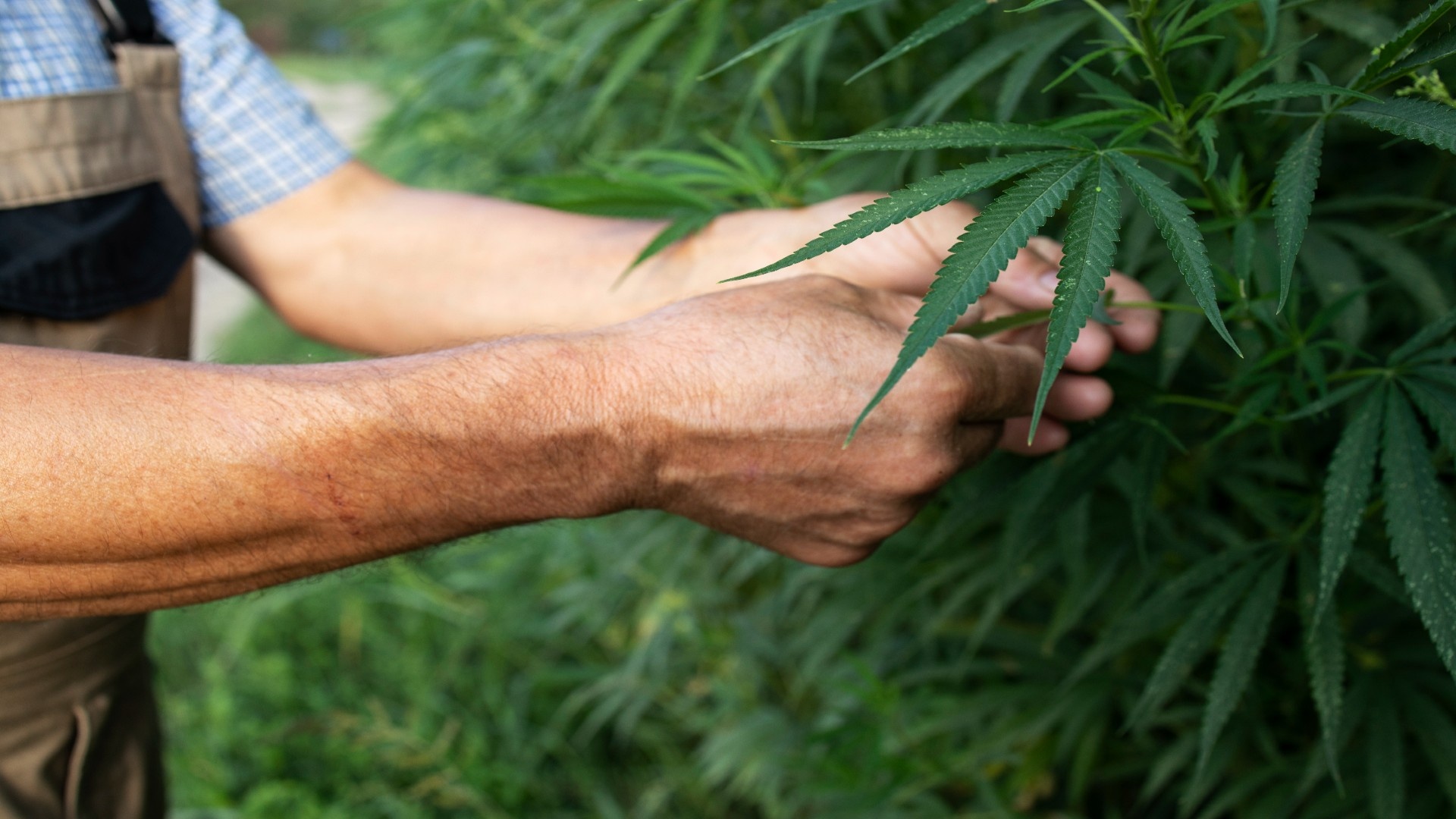Solving the 6 most common weed leaf problems
Do you keep a close eye on your weed leaves? You can often spot growing cannabis problems early by looking at the leaves of your plants. And usually they are also easy to solve. Do you see yellow leaves or brown spots? Read the blog below to find out what could be the cause and how to fix it!
1. Spider mite
A sign that your weed has spider mite, It is best to fight spider mites in a natural way. If the infestation is not so bad yet, you can use garlic (put garlic cloves around the stem of your cannabis plant). Another option is to use natural enemies, such as ladybugs, lacewings or predatory mites. Neem oil is also a good option.
2. Limp Leaves
When the leaves of your weed plant droop, this is generally due to too much or too little water or to a severe nutritional deficiency. You can find out what the problem is by looking closely at the leaves. If your plant gets too much water, the leaves will be heavy and thick. Not only do the leaves droop, if they are also yellow, this is definitely a sign of an excess of water. You can prevent this by only watering when the top layer of soil is dry.
You can also see drooping cannabis leaves if the plant is not getting enough water. If the leaves feel dry and the foliage looks lifeless and colorless, your plant is thirsty. The soil also feels dry and can look cracked. In this case, water a little more and/or more often.
One of the other causes of drooping leaves is a lack of nutrition. In addition to drooping, the leaves may discolor and holes and spots may appear. Cannabis not only needs water, but can sometimes additional nutrition such as potassium, phosphorus and nitrogen.

3. Leaves turn yellow and brown and curl
One of the other common problems with cannabis leaves is curled, yellow and brown leaves. There can be several causes for this. To know for sure what the cause is, take a good look at your plants. Is the cause overheating? If your plants are indoors, they may be too close to the lamps. Place the lamps a little further away from your vulnerable cannabis plants. If you grow outdoors, this problem is less common, although the temperatures in our country can often be quite high now. If there is heat damage, use shade cloth or, if growing in pots, place in a shaded area.
Curly yellow and brown leaves can also be caused by overfeeding. This causes a change in the pH of the soil and water. As a result, your plants can no longer absorb certain nutrients properly, while they receive too much from others. An excess of nutrition causes the roots to burn and as a result they can die. Ultimately, this is of course very bad for your weed. Therefore, stick to the feeding schedule that is stated on the packaging of the food.
The last possible cause is root rot. This occurs when the earth is too wet and the water cannot sink down. This forms an ideal breeding ground for fungi. If your plant suffers from this, the soil will be very wet and mold formation may be visible. Also in this case the advice is to give less water.
4. Cannabis leaf problems: brown spots on the leaf
If you see brown spots on the leaves, there may be a shortage of phosphorus. You will see the discoloration first on the lower leaves. They first turn yellow and then brown. The leaves may also thicken and curl. A shortage of phosphorus usually occurs in the flowering phase. It is therefore advisable to use the right food, which is especially suitable for this phase. This contains more phosphorus.
A lack of calcium can also cause your plants to have problems with their cannabis leaves. This is often associated with a phosphorus deficiency. Therefore, give this mineral together with phosphorus.
5. Yellow leaves
Do your plants have yellow leaves? A shortage of nitrogen can be the cause of this. The yellow coloring starts on the outside en moves from outside to inside. First check whether you are not giving too much water and then make sure you are feeding with nitrogen. Your plant has a deficiency, but do not give more than is stated on the packaging. That would also cause problems.
Yellow leaves can also be caused by a pH imbalance. You can check this with a pH-meter. Downy mildew can also cause yellow leaves. Take a look at the underside of the leaves. Do you see gray and white patches of fluff here? Mildew is a fungus that sucks nutrients from the plant, causing the yellow spots on the leaves. Fight mildew with a natural remedy like neem oil.
6. Leaves with brown tips
The last problem is brown dots on the weed leaves. This can also be caused by a deficiency of a mineral, namely potassium. The more severe the deficiency, the brown the edges of the leaf become. You can also see that the plants are getting longer and weaker. It is therefore important to provide the right nutrition.
Check carefully what is causing these brown edges. People often think that plants need more water, but that is certainly not always the case. More water in this case would even make the problems worse.
With these tips, you can quickly solve problems with weed leaves. Keep in mind that not every discolouration of the leaf is a reason to intervene. If you have nice full buds, you usually don't have to do anything. In that case, don't give any extra food, just keep giving enough water until it's time to harvest.







